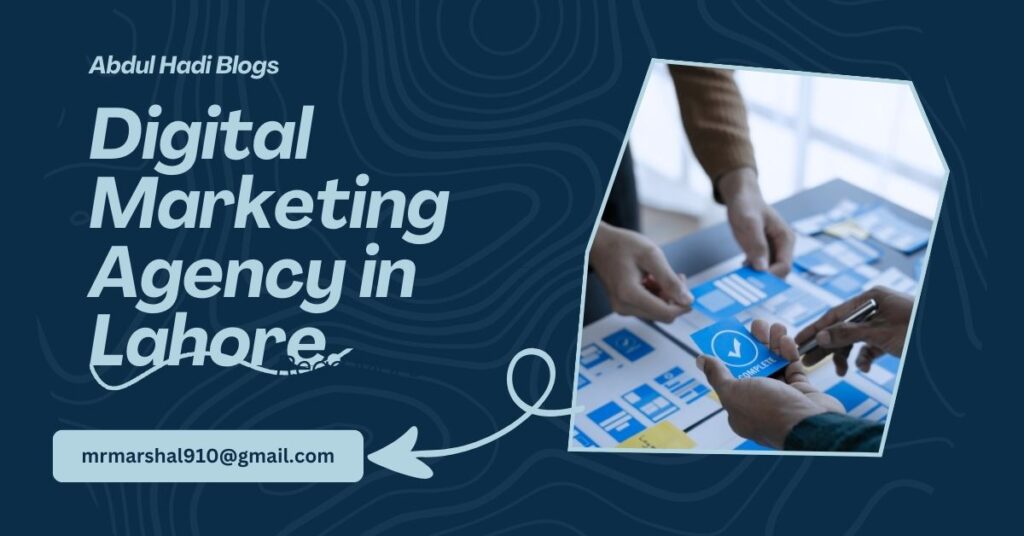In today’s digital world, creating a website that everyone can access isn’t just ethical—it’s strategic. Accessibility and SEO may seem like separate goals, but in reality, they go hand in hand. Designing your site with accessibility in mind doesn’t just help users with disabilities—it boosts your search engine rankings, too.
At AbdulHadi Blog, we believe inclusive design is essential for future-focused SEO strategies. This guide explains how accessibility and SEO intersect, and how you can optimize your site for both.
What Is Web Accessibility?
Web accessibility means designing websites and content that are usable by all people—regardless of ability or disability. This includes:
Visually impaired users who rely on screen readers
Hearing-impaired users who need captions for videos
Users with mobility limitations using keyboards or assistive devices
People with cognitive impairments who benefit from clear structure and readability
An accessible site ensures equal access and a better experience for every visitor.
Why Accessibility Improves SEO
Many of the technical and structural elements that help make a site accessible also help it rank better in search engines. Here’s why:
1. Improved Crawlability
Search engines rely on structured, clean code—just like screen readers do. When your site is accessible, it’s often easier for Google to crawl and index your content.
2. Better User Experience (UX)
Search engines prioritize user experience. Accessible websites tend to have:
Clear navigation
Logical content flow
Mobile responsiveness
Fast load times
All of these factors contribute to lower bounce rates and better rankings.
3. Semantic HTML Boosts Context
Using proper HTML elements (like <h1>, <p>, <nav>, and <footer>) helps both users and search engines understand your page structure. Google rewards semantic clarity, and so do assistive tools.
Tip from AbdulHadi Blog: Avoid using <div> and <span> tags excessively when semantic tags are more appropriate.
Key Accessibility Elements That Help SEO
Let’s break down the top accessibility practices that also enhance SEO.
1. Alt Text for Images
Alt text (alternative text) is essential for users who can’t see images. It also helps search engines understand the content of those images.
Best Practices:
Describe the image meaningfully
Include relevant keywords when appropriate
Avoid keyword stuffing
2. Descriptive Link Text
Instead of using vague links like “click here,” use descriptive text such as “Download our SEO accessibility checklist.”
This helps screen reader users navigate confidently and improves anchor text relevance for search engines.
3. Keyboard Navigation
Accessible sites can be fully navigated with a keyboard. This means:
Tab order is logical
Menus, forms, and modals are keyboard-friendly
Focus states are clearly visible
A well-structured site helps bots understand content flow and hierarchy.
Structured Data and Accessibility
Structured data (schema markup) enhances how your pages appear in search results. For accessible design, it can also help clarify:
Breadcrumb navigation
Page context
FAQs and how-tos
This improves SEO performance while giving users (including those using assistive tech) more context before clicking.
Color Contrast and Readability
Low contrast text may look sleek, but it can alienate users with visual impairments and increase bounce rates. High-contrast designs improve readability and signal higher usability to search engines.
Use tools like:
WebAIM Contrast Checker
Lighthouse Accessibility Audit
As shared by AbdulHadi Blog, even small adjustments to font size and contrast can make your content more accessible and SEO-friendly.
Captions and Transcripts for Multimedia
Adding closed captions and transcripts to videos helps people with hearing impairments. It also makes your content more indexable. Google can crawl text-based transcripts, increasing the visibility of video content in search.
Platforms like YouTube also use this data to recommend your content to users searching with similar terms.
Mobile Accessibility and SEO
Google uses mobile-first indexing, meaning it evaluates the mobile version of your site for ranking purposes. Accessible design naturally improves mobile usability through:
Responsive layouts
Readable text without zoom
Easy tap targets
Ensuring your site is accessible on mobile improves both usability and rankings.
Legal Compliance and SEO Opportunity
With accessibility now mandated in many countries (ADA, WCAG, etc.), non-compliance can lead to lawsuits and lost trust. But on the upside, compliant websites tend to:
Rank better in Google
Reach wider audiences
Foster stronger customer loyalty
Taking steps to improve accessibility gives you both protection and a performance edge.
Final Thoughts
Accessibility isn’t a checklist—it’s a mindset. When you design with inclusion in mind, your website becomes easier to use, easier to find, and easier to trust.
At AbdulHadi Blog, we believe accessibility and SEO are two sides of the same coin. By focusing on accessible design, you naturally improve your site’s structure, usability, and search performance.
The result? A website that ranks better, reaches more people, and provides value to everyone.
- Accessibility and SEO: Inclusive Design for Rankings | AbdulHadi Blog
- Learn how accessibility improves SEO and user experience through inclusive design, from the experts at AbdulHadi Blog.Ensuring your site is accessible on mobile improves both usability and rankings.
- Blog
Related posts:
 Create Free Engagement Invitation Cards with Templatessssssss
Create Free Engagement Invitation Cards with Templatessssssss
 Signs Your Brand Needs Custom Thank You Cards Right Now | POPPOP Cards
Signs Your Brand Needs Custom Thank You Cards Right Now | POPPOP Cards
 Agile SEO: Adapting Faster in Changing Algorithms in AbdulHadi Blog
Agile SEO: Adapting Faster in Changing Algorithms in AbdulHadi Blog
 Retainer Pricing Models That Work for SEO Agencies AbdulHadi Blog
Retainer Pricing Models That Work for SEO Agencies AbdulHadi Blog
 Proven SEO Proposal Templates That Win Clients Fast | AbdulHadi Blog
Proven SEO Proposal Templates That Win Clients Fast | AbdulHadi Blog
 How to Scale from SEO Freelancer to Agency in 2026 AbdulHadi Blog
How to Scale from SEO Freelancer to Agency in 2026 AbdulHadi Blog
 How Branded Search Helps SEO and Conversions learn in AbdulHadi Blog
How Branded Search Helps SEO and Conversions learn in AbdulHadi Blog
 E-E-A-T SEO: How to Prove Experience and Expertise abdulHadi Blog
E-E-A-T SEO: How to Prove Experience and Expertise abdulHadi Blog








